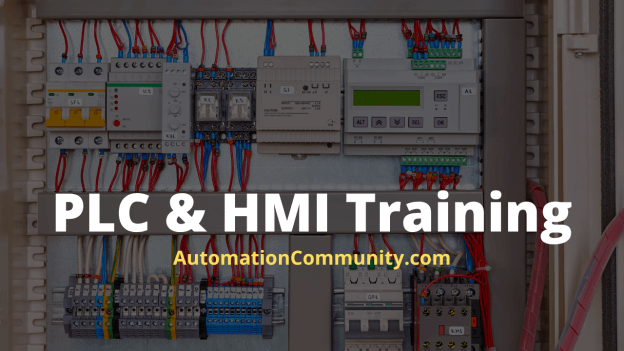PLC Programming Devices
A programming device is a tool that is used to enter programs or instructions into the memory of the PLC’s processor.
The program is entered using a programming language called relay ladder logic. As we learned previously, relay ladder logic is the most popular programming languages. Rather than using words, relay ladder logic uses graphic symbols to illustrate their intended outcome.
The programs used by the programming devices are similar to a schematic for a relay control circuit.
Programming Devices
A device that is used to deliver instructions into the PLC.
The most common is the PC (personal computer).
Types of Programming Languages:
Ladder Logic, Boolean, Grafcet
Ladder Logic
A standardized set of ladder programming symbols to implement control functions.
Boolean
Boolean Mnemonics is a type of language used to program a controller.
Grafcet
It is a symbolic, graphic language that represents the control program as steps or stages in the machine or process. Was developed in France.
IL (instruction list)
lower-level language useful for smaller applications.
This type also helps when speed is of the essence in a program.
ST (Structured Text)
Higher-level language, used to perform complex task. Suited for data handling, mathematical application that use floating-point values, and computational sorting.
It is also the best language for fuzzy logic, artificial intelligence computations, and decision making.
SFC (Sequential Function Charts)
It is a graphical language that offers a diagrammatic representation of control sequences in a program.
Mainly is a flow chart that organizes other subprograms or subroutines.
Discuss various programming devices available
Hand-held programming devices can be used to program small PLCs. These devices are small, inexpensive and easy to use. When plugged into the PLC, they are used to enter and monitor programs.
On the factory floor, hand-held unites and personal computers (usually laptop) are often used to troubleshoot equipment, modify programs and to transfer programs to multiple units.
The most common programming device is a personal computer (PC). Most PLC brands offer software that allows a PC to be used as the PLC’s programming device. The PC communicates with the PLC via an Ethernet.
The PC can be unplugged when not in use – this does not affect the operation of the user program and allows the PC to be used for other purposes during PLC operation.
Some benefits of using this software with a PC are:
– allows user to create, edit, troubleshoot and save ladder logic programs
– computer monitors can display more information than hand-held devices
How a PLC is programmed over the years?
Before PLCs were developed, when the production model in a factory changed, the control system had to change. This process involved hours of tedious labor by highly training engineers.
PLCs made this constant rewiring of control panels obsolete. The first programmable controllers were small and had very limited capabilities. They could send and receive signals but at a speed much slower than today’s controllers.
The first PLCs also lacked standardized communication, which made PLC to PLC communication difficult. Now, PLCs are programmable using PC software and the communication is much more standardized, allowing changes and communication to be accomplished much more quickly.
Early PLCs only had one or two inputs and outputs per device, severely limiting the programming options. Now, a single PLC can have hundreds of inputs and outputs which can also be expanded with additional equipment if necessary. This allows the devices to control much more complex sequence of operations.
PLC troubleshooting has also become much more simplified. Today, a technician can plug a laptop PC to the PLC in order to find out exactly what is malfunctioning. This has made it much easier to investigate specific inputs, outputs and internal operations. The status of a running program can also be monitored by plugging a PC into the PLC.
Advantages of programming and monitoring PLCs remotely from a centrally located PC.
Some of the advantages of using a remote system to program and monitor PLCs are:
• Use one PC to monitor multiple PLCs – this reduces the equipment that is on the factory floor.
• Ability to monitor multiple programs and operations at once.
• Technician does not need to be physically in room with the PLC in order to program/troubleshoot it.
• Engineers can provide support without needing to travel. This also prevents shut-down time that is allowed for travel times.
• Production manager can access data and information from any location.
• It is possible for an Engineer or Programmer to look at a programming issue from anywhere that an internet source is available.
Example:
A programming/troubleshooting issue has developed in a factory. The process at hand is critical to losing a batch of material that is worth millions of dollars.
By the time the programmer could make arrangements and get to the factory the product would be lost. Troubleshooting the problem from the program writer’s present location could save the product, in-turn saving the factory millions of dollars.




Did enjoyed it ,I made alot off note so educational and on point
Great job, thank you.